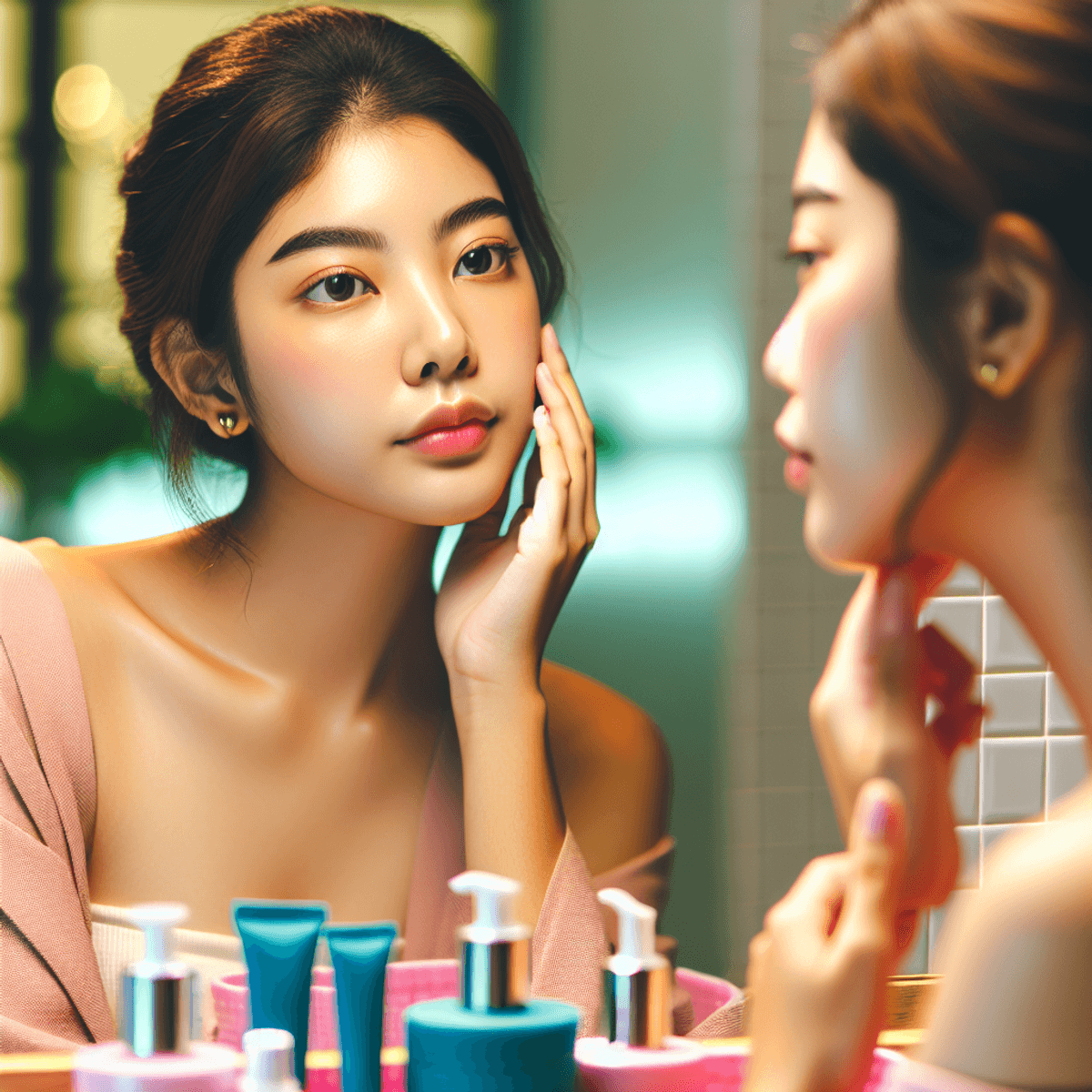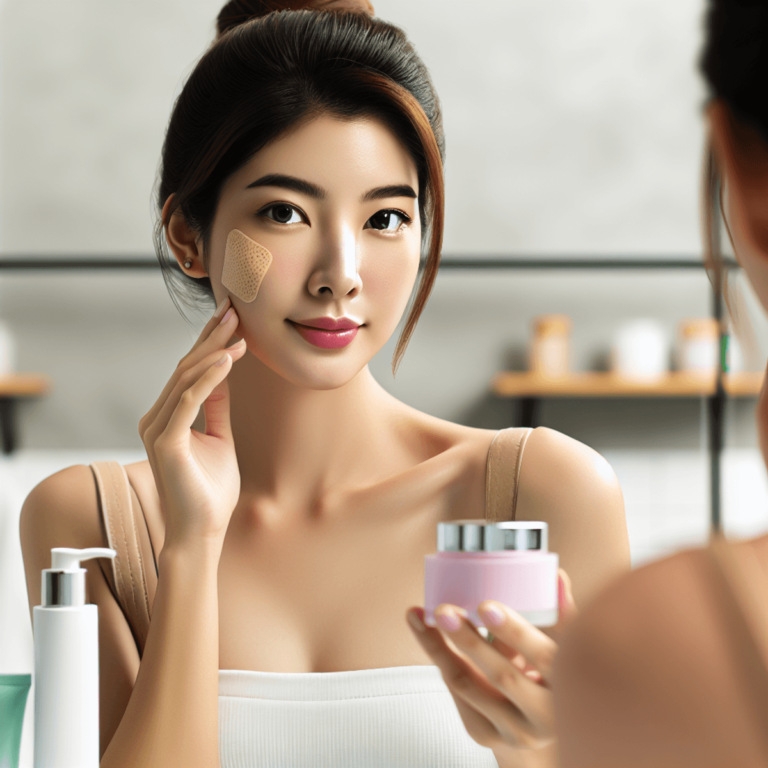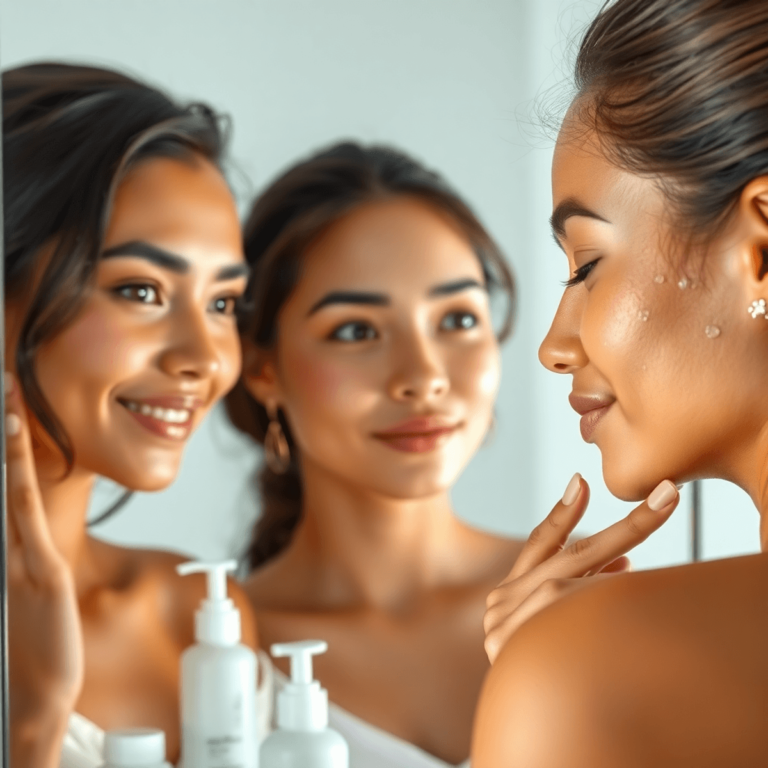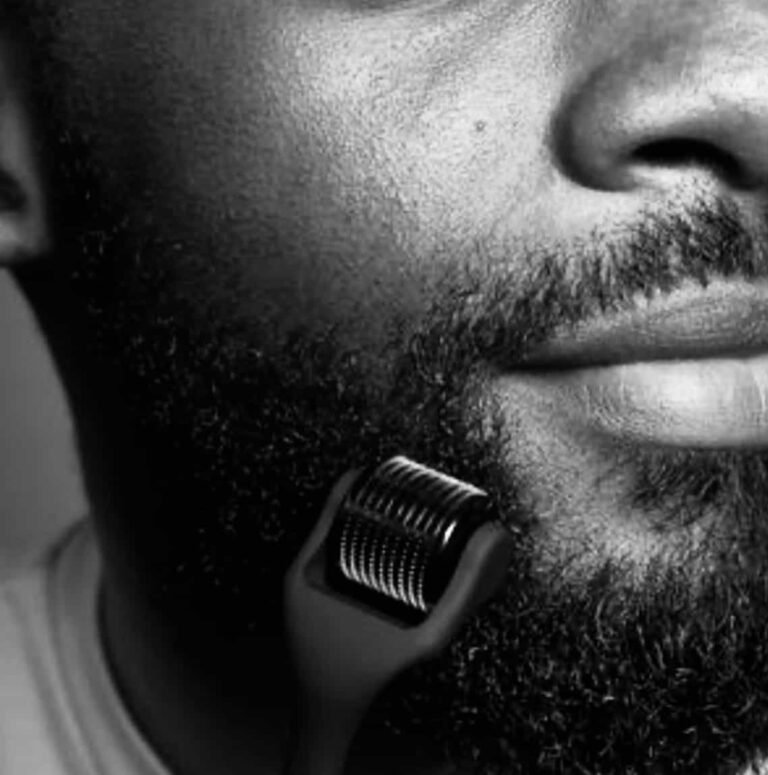How to Get Rid of Acne: 4 Things to Try

Introduction
Acne is a common skin condition that affects millions of people worldwide, from teenagers to adults. This condition, characterized by pimples, blackheads, and cysts, often impacts self-esteem and overall quality of life. Understanding how to get rid of acne involves exploring effective management strategies that address the root causes.
In this article, we will explore four effective strategies to help you manage and reduce acne breakouts for clearer skin. Whether you’re searching for methods on how to remove pimples, how to remove pimples overnight, or how to remove pimples naturally and permanently, these tips can guide you toward better skin health.
Understanding Acne: Causes and Types
Acne is a skin condition characterized by the appearance of pimples, blackheads, and cysts. It affects individuals of all ages but is most common among teenagers and young adults. The psychological impact can be significant, influencing self-esteem and social interactions.
Common Causes of Acne
There are several factors that contribute to the development of acne:
- Hormonal Changes: Fluctuations in hormones, particularly during puberty, menstruation, or pregnancy, can increase oil production in the skin.
- Excess Oil Production: Sebaceous glands produce sebum to lubricate the skin. Overproduction can clog pores and lead to acne.
- Bacterial Infection: Propionibacterium acnes (P. acnes) bacteria thrive in clogged pores, causing inflammation and pus formation.
- Clogged Pores: Dead skin cells and excess oil can block hair follicles, creating an environment ripe for acne development.
Types of Acne Lesions
Understanding the different types of acne lesions can help in choosing the right treatment:
- Whiteheads: These are closed comedones formed when a pore is completely blocked.
- Blackheads: Open comedones where the trapped sebum oxidizes and turns black.
- Papules: Small red or pink bumps that are inflamed but do not contain pus.
- Pustules: Similar to papules but filled with pus, making them appear white or yellow at the tip.
- Cystic Acne: Large, painful lumps beneath the skin’s surface caused by severe inflammation.
Each type requires a specific approach for effective management. Identifying what causes your acne and understanding its various forms can significantly aid in choosing appropriate treatments.
4 Effective Ways to Get Rid of Acne
1. Establish a Consistent Skincare Routine
Maintaining a proper skincare routine is essential for acne-prone skin. It helps keep the skin clean and balanced, reducing the risk of breakouts. Here’s how you can structure your routine:
Cleanser
Using a gentle cleanser is crucial. Look for products that are:
- Non-comedogenic: These products won’t clog your pores.
- Alcohol-free: To prevent drying out your skin.
- Anti-bacterial: To help reduce bacteria on the skin’s surface.
Popular options include Cetaphil Gentle Skin Cleanser and Neutrogena Oil-Free Acne Wash.
Toner
A toner helps to remove any remaining impurities after cleansing and prepare your skin for the next steps. Choose toners that:
- Contain salicylic acid or witch hazel: These ingredients help in unclogging pores.
- Are free from alcohol and fragrances.
Examples are Thayers Witch Hazel Toner and Paula’s Choice Skin Perfecting 2% BHA Liquid Exfoliant.
Moisturizer
Even acne-prone skin needs hydration. Opt for moisturizers that are:
- Light-weight and non-comedogenic.
- Contain soothing ingredients like aloe vera, ceramides, or hyaluronic acid.
Consider products like CeraVe PM Facial Moisturizing Lotion or Neutrogena Hydro Boost Water Gel.
Sunscreen
Sun protection is vital, especially when using acne treatments that can make your skin more sensitive to UV rays. Use a sunscreen that is:
- Non-comedogenic and oil-free.
- At least SPF 30.
Good choices include EltaMD UV Clear Broad-Spectrum SPF 46 and La Roche-Posay Anthelios Melt-in Milk Sunscreen SPF 60.
Creating a consistent skincare routine with these steps can help manage acne effectively by keeping your skin clean, hydrated, and protected from environmental damage.
2. Incorporate Targeted Treatments into Your Regimen
When tackling acne, targeted treatments can significantly improve your results. Incorporating specific acne treatment methods into your skincare routine addresses the root causes of breakouts directly.
Salicylic Acid
Salicylic acid is a common ingredient in many acne products. It’s a beta hydroxy acid (BHA) known for its exfoliating properties, which help unclog pores by dissolving dead skin cells. This action reduces the formation of pimples and prevents future breakouts.
- How it works: Salicylic acid penetrates the skin and helps to shed dead skin cells from within the follicles. By keeping the pores clear, it minimizes the opportunities for acne-causing bacteria to thrive.
- Usage tips: Start with a lower concentration (0.5% to 2%) to see how your skin reacts. Apply it after cleansing and before moisturizing.
- Potential side effects: Dryness, irritation, or peeling, especially if used excessively.
Benzoyl Peroxide
Another effective ingredient is benzoyl peroxide, which combats acne through its antibacterial properties. It targets and kills P. acnes bacteria, one of the primary culprits behind inflamed pimples and cystic acne.
- How it works: Benzoyl peroxide releases oxygen into the pores, creating an inhospitable environment for anaerobic bacteria like P. acnes.
- Benefits: Reduces inflammation and redness, making it particularly effective against red pimples and pustules.
- Usage tips: Available in concentrations ranging from 2.5% to 10%. Start with a lower concentration to minimize irritation.
- Potential side effects: Dryness, redness, or peeling skin. Using a non-comedogenic moisturizer can help mitigate these effects.
Other notable mentions include:
- Retinoids
- Promotes cell turnover and prevents clogged pores.
- May take several weeks to show results but offers long-term benefits.
- Sulfur
- Absorbs excess oil and has antibacterial properties.
- Often combined with other ingredients like resorcinol for enhanced efficacy.
- Alpha Hydroxy Acids (AHAs)
- Glycolic acid and lactic acid are common AHAs that help exfoliate the surface layer of the skin.
- Improves overall skin texture and radiance while reducing breakouts.
Incorporating these topical treatments for acne into your routine can lead to noticeable improvements in your skin’s clarity and texture. Remember that consistency is key; give each treatment time to work before expecting drastic changes.
3. Explore Professional Treatment Options with a Dermatologist
For those dealing with stubborn or severe acne, professional intervention might be necessary. Knowing when to seek help can make a significant difference in managing and reducing breakouts effectively.
When to Consider Professional Help:
- Persistent Acne: If your acne does not improve with over-the-counter treatments.
- Severe Breakouts: Large, painful cysts or nodules that do not respond to home care.
- Scarring Concerns: Preventing long-term scarring from untreated acne.
- Emotional Impact: When acne significantly affects your self-esteem and quality of life.
Common Dermatological Procedures:
1. Chemical Peels
- Purpose: Exfoliate the top layers of skin to remove dead cells and unclog pores.
- How it works: A chemical solution is applied to the skin, causing it to exfoliate and eventually peel off.
- Benefits: Reduces acne scars, hyperpigmentation, and improves skin texture.
- Considerations: May cause redness and peeling; multiple sessions are often required.
2. Laser Therapy
- Purpose: Target acne-causing bacteria and reduce inflammation.
- How it works: Uses focused light energy to penetrate the skin and kill bacteria while promoting healing.
- Benefits: Effective for both active acne and scarring, minimal downtime.
- Considerations: Can be expensive; multiple treatments needed for optimal results.
3. Extraction
- Purpose: Manually remove blackheads and whiteheads that are not clearing up with other treatments.
- How it works: A dermatologist uses sterile tools to extract clogged pores safely.
- Benefits: Immediate improvement in skin appearance, reduces the risk of developing inflamed pimples from clogged pores.
- Considerations: Should only be performed by a professional to avoid infection or scarring.
Exploring these acne treatment methods can provide more comprehensive solutions for how to get rid of pimples on face effectively. Consulting with a dermatologist ensures you receive tailored advice and appropriate treatments based on your specific skin condition.
4. Adopt a Holistic Approach to Acne Management
Taking a holistic approach to acne management involves addressing lifestyle factors beyond just topical treatments. Factors like diet, stress levels, and overall wellness can play a crucial role in achieving clear skin.
Diet and Nutrition
The foods you consume can significantly impact your skin’s health. Some dietary adjustments that may help manage acne include:
- Low Glycemic Diet: Foods with a low glycemic index can reduce insulin levels and consequently decrease sebum production.
- Reducing Dairy Intake: Some studies suggest a link between dairy consumption and increased acne severity, though opinions on this remain divided.
- Hydration: Drinking plenty of water helps maintain skin elasticity and flush out toxins.
Stress Management Techniques
Stress is known to trigger hormonal changes that can lead to breakouts. Incorporating stress management techniques into your routine can help regulate hormones and support clearer skin.
- Mindfulness Practices: Techniques such as meditation, deep breathing exercises, or yoga can reduce stress levels.
- Regular Exercise: Physical activity helps regulate hormones and improve blood circulation, which benefits overall skin health.
Effective stress management not only supports clear skin but also enhances your overall well-being.
Sleep Hygiene
Quality sleep is essential for skin regeneration and repair. Aim for 7-9 hours of uninterrupted sleep per night to give your body the rest it needs.
- Consistent Sleep Schedule: Going to bed and waking up at the same time every day helps regulate your body’s internal clock.
- Sleep Environment: Ensure your sleeping area is comfortable, dark, and quiet to promote better sleep quality.
Avoiding Skin Irritants
Minimizing exposure to potential irritants can also help prevent breakouts:
- Non-Comedogenic Products: Use skincare and cosmetic products labeled as non-comedogenic to avoid clogging pores.
- Gentle Cleansing: Opt for gentle cleansers that do not strip your skin of its natural oils.
Adopting these holistic methods for managing acne complements topical treatments and provides a comprehensive approach towards achieving clearer skin.
Debunking Common Myths About Acne
Addressing Common Misconceptions
When it comes to acne, myths abound. Many believe that certain foods like chocolate or greasy foods are direct triggers for acne breakouts. While diet can play a role in skin health, there’s no concrete evidence linking these specific foods to acne. It’s more about how your body reacts to certain ingredients rather than the foods themselves.
Another common misconception is that only teens suffer from acne. In reality, acne affects people of all ages. Hormonal changes during puberty do contribute significantly, but adults can experience acne due to stress, hormonal imbalances, or other underlying health conditions.
Importance of Individualized Approaches
Acne treatment is not one-size-fits-all. What works wonders for one person might not work at all for another. Individualized approaches are crucial:
- Skin Type: Different skin types (oily, dry, combination) require different treatments.
- Severity: Mild acne might respond well to over-the-counter products, while severe cases often need prescription medications or professional interventions.
- Underlying Causes: Hormonal acne might need hormonal treatments, whereas bacterial acne could benefit more from antibacterial treatments.
Recognizing and debunking these myths allows you to focus on personalized strategies that align with your unique skin needs.
For example:
“Contrary to popular belief, washing your face multiple times a day doesn’t necessarily prevent acne and can sometimes exacerbate the problem.”
Knowing the facts helps you make informed decisions about your skincare routine and lifestyle choices.
Understanding the nuances behind common acne myths debunked helps pave the way for effective and tailor-made solutions. Misconceptions can lead to inappropriate treatments; accurate information empowers you to manage your skin health better.
The Importance of Patience and Consistency in Acne Treatment
Treating acne effectively requires not just the right products but also patience in treating acne. Immediate results are rare when it comes to skincare treatments.
1. Commitment to a regimen
It is essential to stay committed to your chosen treatment plan. Skincare routines and treatments often take several weeks to show noticeable improvements, so understanding the skin care process is vital.
2. Avoid frequent changes
Frequent switching between products can irritate the skin, leading to setbacks in your progress. Stick with your regimen long enough to assess its effectiveness.
3. Track progress
Keeping a skincare journal can help you monitor changes and determine what works best for your skin type.
4. Consistency is key
Regular application of treatments, even when results aren’t immediately visible, ensures that the active ingredients have time to work. It’s important to remember that skincare should be a daily commitment, rather than an occasional task.
Patience and consistent effort are crucial components for achieving clearer skin. However, if you find that your acne persists or worsens despite following these guidelines, it may be worth considering other skin conditions such as psoriasis, which can sometimes mimic acne symptoms.
Conclusion: Your Journey Towards Clearer Skin Starts Now!
With the knowledge and practical tips you’ve gained, you’re well on your way to achieving clearer skin. Understanding the root causes of acne and adopting a consistent skincare routine can make a significant difference. Remember, clear skin solutions often involve a combination of treatments and lifestyle adjustments tailored to your unique needs.
Seeking professional support is crucial for stubborn or severe cases. Dermatologists offer expertise and advanced treatments that can complement your efforts. Stay committed, be patient, and embrace a proactive approach to managing breakouts.
Explore the How to Get Rid of Acne: 4 Things to Try discussed in this article, and take control of your skin health today!
FAQs (Frequently Asked Questions)
What are the common causes of acne?
Acne is primarily caused by hormonal changes, excess oil production, bacterial infection, and clogged pores. These factors can lead to various types of acne lesions.
What skincare routine should I follow for acne-prone skin?
A consistent skincare routine for acne-prone skin includes using a gentle cleanser, toner, moisturizer, and sunscreen. It’s important to choose products that help maintain clean and balanced skin.
What are some effective topical treatments for acne?
Popular over-the-counter topical treatments include salicylic acid, which helps exfoliate the skin and unclog pores, and benzoyl peroxide, which kills bacteria. Both can be integrated into your skincare regimen.
When should I consider professional treatment for acne?
If you have stubborn or severe acne that does not respond to over-the-counter treatments, it may be time to consult a dermatologist. Common professional treatments include chemical peels, laser therapy, and extractions.
How can lifestyle factors impact acne management?
Lifestyle factors such as stress management techniques like mindfulness and exercise play a significant role in supporting clear skin. These approaches can help regulate hormones that trigger breakouts.
Why is patience important in treating acne?
It’s crucial to remain patient and committed to your treatment plan for several weeks before expecting significant results. Acne treatment often requires time to show improvements.










